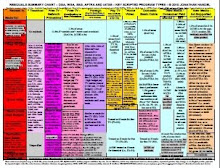Note: This post is off topic.
The typical comic book cover features an assortment of superheroes and civilians, but one thing’s almost a constant: the guys are buffed and the women curvaceous (the aliens are too, in a way, unless they’re blobs). Add to that a rainbow of colors, and it’s obvious why comic book covers are so appealing.
But about those colors: sometimes they actually are a rainbow. That was certainly true at the Comic-Con 2008 booth of Prism Comics, a non-profit, all-volunteer group that promotes visibility for gay, lesbian, bisexual and transgendered comic content and creators. The group’s been around since 2003, and although it sounds like a comic book publisher itself, it’s actually an educational and networking group – though they do published an informative annual guide to gay comics.
I wish I could tell you I sat down for an interview with two of the group’s leaders, but actually, we stood. With an estimated 125,000 attendees, there weren’t many places to sit in the exhibit hall. So, as people streamed by, occasionally photographing Board member Ted Abenheim (who was in costume), I chatted with Ted and president Roger Klorese, juggling my notebook, briefcase, and a bit of swag.
Although Prism’s “only” five years old, it’s an outgrowth of a group founded about 20 years ago, at the time of the first Comic-Con panel on gays and comics. The Comic-Con management has been supportive ever since, I learned, and this year there were four panels on glbt subjects, as well as a mixer, a party, and also a dinner organized by a Prism supporter, Aman Chaudhary.
As you might expect, Prism focuses some of its efforts on major players in the industry: DC and Marvel Comics, of course, and also Diamond Comics, the biggest distributor. Ted and Roger told me that Prism has good relations with these companies – you might say Diamond is a gay’s best friend – though the group is less connected to another key player, Dark Horse.
Among the group’s other programs are an annual award for queer comics and even a grant program for queer projects. The overall motivation for these efforts: glbt creators were “looking for a home,” said Roger. Adds Ted, “we want to let fans and retailers – everyone – know we’re there.” All in all, worthy goals and a great set of programs. Check out their website, and drop by their booth next Comic-Con.

